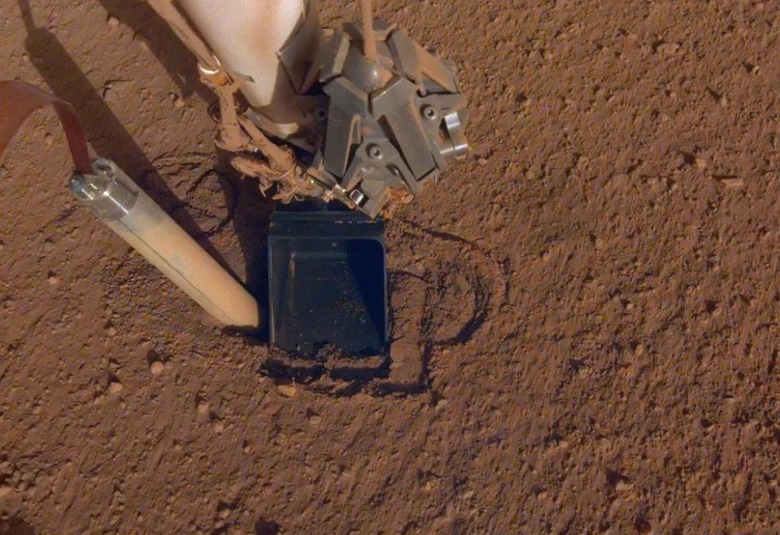NASA's Mars 'Mole' Saga Is Getting Sadder And Sadder
- NASA's InSight lander has a self-hammering probe that isn't doing what it's supposed to.
- The instrument, nicknamed "the mole," can't seem to get a grip on the soft martian soil, hindering its ability to dig to the depth it needs to collect useful data.
- NASA is continuing to work on getting the mole to work as intended, but
You've really got to hand it to NASA; the space agency definitely doesn't give up easily. The best example of that might be the ongoing saga of the Mars InSight lander which arrived on the red planet back in late 2018. The lander safely touched down and began conducting science, but one of its instruments has been acting up in a big way. The self-hammering probe known as the "mole" is supposed to be many feet deep in the planet by now, but it's still hanging out in its hole right near the surface.
The probe's inability to hammer itself deeper into the planet has been well chronicled, and NASA just revealed a new update that suggests things haven't really improved that much since the last time we checked in.
The mole is designed to hammer itself deeper into the Mars soil, but it just couldn't get a grip on the loose dirt that covers the planet. Without enough friction to push itself deeper, the probe kept popping back out. NASA removed a protective covering that housed the mole's entry hole and then used the InSight lander's robotic arm to press against the soil and increase the friction. This worked for a time, but the probe eventually lost its grip and came back out.
The next, more serious intervention involved using the robotic arm and its scoop to push the probe into the hole. That has seemed to work, up to a point, but NASA's newest update has some troubling news. It's becoming apparent that the mole isn't actually digging, and that it may actually be just jostling about in the hole it already dug for itself.
Via NASA:
It's mostly buried now, thanks to recent efforts to push down on the mole with the scoop on the end of the robotic arm. But whether it will be able to dig deep enough – at least 10 feet (3 meters) – to get an accurate temperature reading of the planet remains to be seen. Images taken by InSight during a Saturday, June 20, hammering session show bits of soil jostling within the scoop – possible evidence that the mole had begun bouncing in place, knocking the bottom of the scoop.
The mole has done basically no useful digging since it was first deployed. It was designed to be capable of digging as far as 16 feet deep within the planet, and it needs to dig a minimum of 10 feet to offer any reliable data. There's no telling whether or not the mole will eventually realize its full potential, but for a while now every mole update has been sadder than the last.
